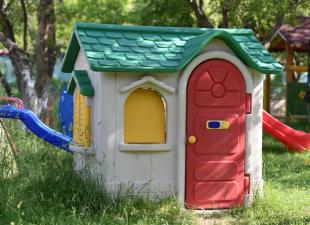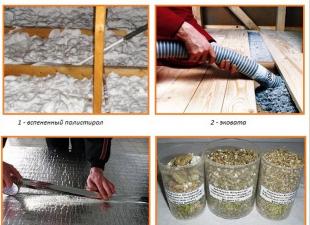Garages, warehouses, utility rooms, greenhouses or work rooms can be heated with a waste oil stove. This is an effective way to get warm rooms at the expense of shareware fuel. In this niche of heating technology, both simple oil waste furnaces and automated waste oil boiler furnaces are used.
Waste oil is available in large quantities at any motor transport enterprises or service stations. And such a way of its useful disposal is the best solution to get rid of the "dirty" waste of oil products.
The appearance of spent fuel stoves in Russia dates back not so long ago. At the same time, the use of such heating equipment in the "west" has long become a commonplace.
Justify the use of such units
A waste oil stove, or, as it is also called, a miracle stove, is really wonderful in the economic aspect of its operation. Using very cheap fuel, for the correct disposal of which it was also necessary to “spend money”, such a furnace pays for itself in a very short time.
Waste oil - or simply "working out" can be used motor, industrial, transmission oil.
Operational features
An oil-fired oven, due to the simplicity of its design, can be made by hand, or can be purchased ready-made. Such devices are economical, virtually smokeless, simple, but at the same time available for “body kit” by automated devices and heating circuits.
The mobility of a simple waste oil furnace allows it to be easily dismantled and transported to a new location. Non-attachment to the electrical network makes a simple version of the furnace non-volatile.
The design features of the upper part of the oven allow it to be used to heat a kettle or pot.
Subject to safety regulations, the oven is quite fireproof.
Operational difficulties include the need for a high (up to 4 m) chimney and the need for systematic weekly cleaning of the chimney and oil tank of the furnace during its constant operation.
Attention! The operation of the furnace on used oil requires the presence of a working carbon dioxide fire extinguisher in the room. If water enters the fuel, it may foam violently and splash out, which may cause a fire.
Furnace design option
We invite you to consider a simple but proven waste oil furnace design. Such a furnace distributes heat mainly through infrared radiation.
It consists of two chambers, which are interconnected (welded) by a piece of thick steel pipe with holes.
 How does it all work?
How does it all work?
Note! Proper and safe operation of a waste oil furnace involves the use of additional "bells and whistles". This design is a necessary minimum for heat generation.

The lower chamber is a container for fuel, both an evaporator and a combustion chamber. It has a hole with a damper, which is used to regulate the combustion mode and fuel filling.
It is obligatory to have legs for stable positioning of the furnace on the heated “territory” and creating an air gap between the bottom and the surface of the installation.
A pipe with holes welded into the upper cover of the lower compartment is an afterburning chamber in which vapors from the oil boiling in the lower compartment are burned. The two-stage chamber allows virtually complete combustion of the fuel.
A cylindrical heated module is welded to the upper part of the pipe with holes. In it, a partition is welded to the upper plane, designed to retain warm combustion products in the chamber.
A chimney pipe with a diameter of more than 100 mm is welded into the top cover of the heated module. It should rise above the level of the stove by 3-4 m naturally with access outside the room under a slope in the room or strictly vertically. Outside the room, the pipe is located strictly vertically to avoid blowing. The chimney must be detachable for periodic preventive cleaning of the furnace and itself.


For safe topping up of fuel into the evaporator, the mining furnace should be modified with a continuous fuel supply system.

This may be an additional container located on the same level with the evaporation chamber and connected to it by a pipeline.



To increase the efficiency of the waste oil furnace, by creating a forced air flow, a heating air chamber can be mounted on the upper chamber of the heater.
Air is blown into it with the help of an electric fan located at a safe distance (the oven heats up to 800-900 ° C). After passing through the labyrinth of the air exchanger, the air is heated and supplied to the room.
This method adds to the infrared method of heating also the air method of heating the room.




On the basis of such furnaces for mining, it is possible to build a heating boiler: air or water. Thus, it becomes possible to heat additional rooms.
Method and rules of operation
By themselves, these oils do not burn. Waste oil furnaces operate by burning fumes.
But these pairs must first be obtained somehow. The sequence of actions is as follows:
- The lower evaporator tank of the furnace is filled with fuel - mining. From above, a little (20-50 grams) of gasoline or solvent is added to it. Further, with the help of a burning wick on a long wire, fuel is ignited in the evaporator chamber of the furnace.
- Initially, gasoline or solvent on the surface of the used oil lights up. When it burns, heat is released, which leads to boiling of the oil in the container. When the oil boils, naturally, vapors are formed, which, entering the afterburner chamber, ignite, forming a stable column of flame in the pipe.
- After 5-10 minutes, the oven reaches the optimal operating mode. By adjusting the position of the damper of the filler hole-blower, we set a stable mode of operation of the furnace of the intensity we need.
Attention! When making an oil oven with your own hands, you should keep in mind such moments. The above diagram of an oil-fired furnace has a number of functional disadvantages that manifest themselves in non-standard situations.
It could be:
- water entering the fuel, which leads to a sharp foaming and pouring of oil from the evaporator. And it can just catch fire on a hot case. Have a fire extinguisher next to the stove!
- the absence of a fuel supply system implies adding oil when the furnace is stopped and cooled down. Although oil is not combustible in itself, but why risk your health? ..
- the need for constant monitoring of the furnace. She does not "love" loneliness - she can do "Skoda".
Waste Oil Oven Safety
Once again about, perhaps banal, but vital points:
- Do not use flammable substances as fuel - they are intended in small quantities only for the initial start-up of the furnace for mining.
- Fuel is only oil of various kinds.
- Strong drafts are an increased threat to the operation of the furnace.
- High temperatures can cause spontaneous combustion of combustible materials near the oven. Do not obstruct at least 0.5 m of space around the oven.
- The tightness of the chimney is your health.
- The oven must not be left unattended for a long time.
- Avoid the presence of water in the oil!!!
A safer mode of operation is provided by closed-type waste oil furnaces. In them, the combustion process is "closed" in the pipe. Such furnaces are not afraid of impurities in the fuel, sudden attenuation or clogging of the chimney.



 parlini.ru Repair of apartments, cottages and houses.
parlini.ru Repair of apartments, cottages and houses.


